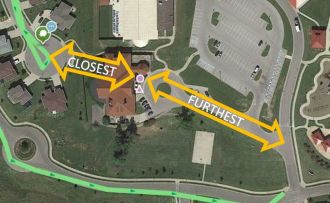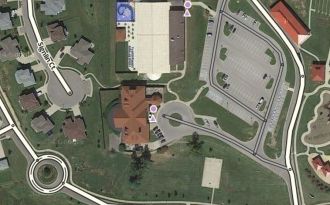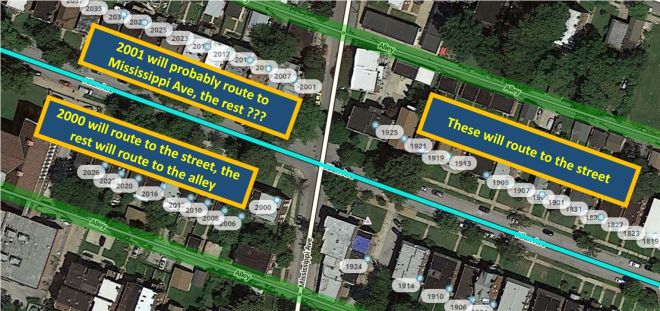A quick visual tutorial to show the effects a place's position has on routing.

Here is a UR from a Wazer who couldn't get to the building from Beringer Dr. because the parking lot is not connected to Beringer. The building's address is Armstrong Mill Rd. The Wazer was taken to Beringer Dr. because that's the closest road to the place.

The solution is to draw a PLR. Now the PLR, which connects to Armstrong Mill Rd, is closest to the place and Waze will route correctly. Do this when you create the place to avoid any problems.
Here is another example:
 |
 |
| In this case the person was routed to a street behind the building. | The solution is a PLR. |
Below is the address view of a street. The UR was "Address 2000 takes me to the alley."

The 2000 even numbers will route to the alley because the pins are closer to the alley than the street. The solution is to move the address pin closer towards the street. 2000 has already been moved.
The 2000 odd numbers' pins are roughly equidistant between the street and the alley, making it uncertain where they will route to with the exception of 2001. Because address 2001's pin is closer to the side street than it is to the street in front or the alley behind, it will probably route to Mississippi Ave.
The 1800-1900 odd numbers will route to the street.
If you are creating addresses, keep this in mind. You want the address pin to be close to the street. You can place it in the yard or driveway. It does not have to be positioned over the house.